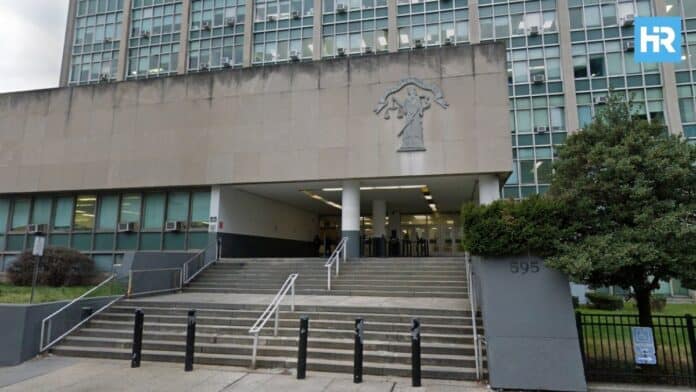We’ve spent hours digging through the best online casinos so you don’t have to – testing games, checking payout speeds, reading the fine print on bonuses, and seeing which sites actually treat players right.
What we found? A handful of casinos that really stand out – like our top pick overall, Ignition. They’re safe, legit, and packed with perks. Think high-paying games, generous promos, and smooth withdrawals.
Ready to explore more? Let’s dive right in.
Best Online Casinos
Important: The sites listed in this guide are targeting English speakers around the world. Please remember to check your local laws to ensure online gambling is legal where you live. Also Adblock might get confused so please disable it if you have any issues with our links.
Curious to discover what sets Ignition Casino apart and how the other great online casinos in our lineup manage to measure up? Let’s jump right in and uncover all the details!
1. Ignition – Best Online Casino Overall

Pros:
- Generous welcome offer worth up to $3,000
- Extensive selection of 300+ slots and classic table games
- More than 30 blackjack tables with live dealers
- Quick withdrawals available
- Top online poker platform with active tournaments
- Around-the-clock live chat assistance
Cons:
- Best bonuses are aimed at cryptocurrency users
- Locating the live chat feature may initially feel tricky
Ignition Casino is best known for its poker platform, but also delivers strongly across other gaming categories. With over 300 titles from top providers, players can enjoy slots like Golden Buffalo, Aloha King Elvis, and classics like Mythic Wolf.
Table games include American and European roulette, craps, single- and double-deck blackjack, and various video poker options. Poker fans get access to guaranteed prize tournaments and anonymous tables.
Crypto users get two 150% bonuses up to $1,500 each, both with a low 25x wagering requirement. Traditional deposits also unlock a dual welcome bonus: 100% up to $1,000 for poker and 100% up to $1,000 for casino games.
Payment methods include Visa, Mastercard, Bitcoin, Litecoin, Ethereum, and Tether. MatchPay is also available, supporting PayPal and Apple Pay.
>> Enjoy your $3,000 bonus
2. Slots.lv – Best Online Real Money Casino for Slot Games

Pros:
- Generous bonus up to $3,000 plus 30 free spins
- 250+ slot and table games
- Over 30 progressive jackpots
- Live roulette, blackjack, and baccarat
- Engaging specialty games
- Payouts within an hour
Cons:
- No telephone customer support
- Fewer promotions after initial welcome bonus
Slots.lv is a top pick for jackpot hunters, offering progressive jackpots, bingo, and card games. The game library features providers like RealTime Gaming, Betsoft, Rival, and Woohoo, with titles ranging from classics like Luxe 555 to jackpot slots like Cyberpunk City and Shopping Spree, which recently topped $2 million.
New crypto users at this real money online casino receive a 200% bonus up to $3,000 and 30 free spins on Golden Buffalo. Traditional payment users get a 100% bonus up to $2,000 plus 20 free spins.
Deposits are easy via Visa, Mastercard, Bitcoin, Ethereum, and more. MatchPay supports e-wallets. Crypto withdrawals are unlimited, while bank wire payouts are capped at $2,000 weekly.
>> Grab a $3,000 bonus offer
3. Super Slots – Top Casino Online for Real Money Live Dealer Games

Pros:
- 300 free spins offer
- Over 1,000 slot and table games
- 70+ live dealer games
- Wide range of banking methods
- Daily competitive tournaments
- Diverse bonus opportunities
Cons:
- Game filtering could be improved
- Mobile interface needs refinement
Super Slots stands out with a massive slot selection and strong live dealer offerings, especially for blackjack fans.
It features over 1,000 slots from BGaming, Rival, Betsoft, and Yggdrasil, including hits like Gemhalla. Players can enjoy around 20 blackjack variants and a wide range of live dealer games. Daily tournaments offer prize pools up to $35,000.
New players at this real money online casino get 300 free spins over 10 days (30 spins daily) on a mystery slot.
The site supports various traditional payment methods and 15+ cryptocurrencies, with fast cashouts and flexibility.
>> Enjoy 300 free spins
4. Slots of Vegas – Best Real Money Casino Online for Bonuses

Pros:
- $2,500 bonus + 50 free spins
- Offers unique table‑game variants like Suit ’Em Up and Perfect Pairs
- Free games in practice mode
- High‑quality live‑dealer games
- Low wagering requirements
Cons:
- Average payment method variety
- Must log in to see live dealer games
Slots of Vegas is a top pick for bonuses, offering a $2,500 welcome package with quality real money games.
It features titles from RealTime Gaming, including popular slots like Samba Jackpots, Big Cat Links, and Legend of the High Seas, plus over a dozen video poker games like Deuces Wild and Aces & Eights. Live dealer tables are available after login.
New players get a 250% match up to $2,500 + 50 free spins (code WILD250) with a $30 minimum deposit. The 10x wagering requirement is low, though the bonus applies only to slots, keno, and specialty games.
There are 20+ recurring bonus codes and a VIP program with faster payouts and higher limits.
Deposit with cards or Bitcoin and withdraw via Bitcoin, bank wire, or check. Crypto offers fast, fee-free withdrawals, while fiat methods take longer but start at just $30.
>> Get your $2,500 welcome offer
5. Wild Casino – Best Casino Online for Crypto

Pros:
- 250 free spins offer
- Daily tournaments available
- 650+ slot and table game offerings
- Supports 16 cryptocurrencies
- Quick and efficient payouts
Cons:
- Game navigation could be improved
- Mobile site needs refinement
Wild Casino is a top pick for crypto players, offering a wide range of digital payment options and fast, secure withdrawals, often processed in under an hour.
As one of the highest-paying online casinos for slots fans, it features over 650+ slot machines and a solid variety of table and poker games. Popular titles include Golden Dragon Inferno. Daily roulette, blackjack, and slot tournaments offer prize pools up to $35,000.
New players get 250 free spins over 10 days (25 per day), each linked to a different slot. Winnings carry no wagering requirements, just a $20 deposit to claim.
Payment options at this real money online casino include credit cards, bank transfers, and numerous cryptocurrencies like Bitcoin, Ethereum, and Dogecoin.
>> Enjoy 250 free spins
Best Online Casino Sites – Our Ranking Criteria
Safety and Security
It’s always better to be safe than sorry, don’t you agree? This quote is very true when it comes to online casinos because you are trusting them with your personal and financial information.
To avoid any negative consequences, we stick to safe and secure online casinos, so your funds are always protected.
Variety of Online Casino Games
Your online casino experience should be as fun as possible, which is why we prioritized casinos offering a diverse selection of games. Whether you’re spinning slots, hitting the tables, joining live dealer sessions, or even sports betting, each featured casino covers all your gaming preferences.
Software Providers
It’s not just about the quantity of games, quality counts too. That’s why every casino we’ve recommended features reputable and trusted providers like Pragmatic Play, Visionary iGaming, NetEnt, and many others, ensuring top-notch gameplay every session.
Bonuses & Promotions
A strong welcome bonus isn’t just an incentive, it’s your introduction to what the casino does best. We’ve evaluated casinos not only on the generosity of their bonuses but also on the fairness of their wagering terms and how effectively these offers enhance your gaming.
Flexible and Secure Payment Methods
Enjoying games and bonuses means little without reliable payment options. All casinos highlighted in our list provide multiple secure and efficient ways to deposit and withdraw funds, including traditional methods and crypto-friendly solutions like Dogecoin and Solana, allowing you to manage your money with ease.
Mobile Compatibility
Gaming on the go has never been more essential. Each casino we recommend provides an optimized mobile experience, either through dedicated apps available for Android and iOS or via fully responsive mobile sites for a smooth gameplay wherever you are.
Customer Support Options
All the top online casinos have a stand-out customer support team. You never know when bad luck is going to hit the fan.
Although you’d hope never to need the assistance of a competent representative, it’s a great safety net to have. We prioritized casinos that offer 24/7 support!
We used similar criteria to rank the best online casinos in Europe.
Real Money Online Casinos VS. Crypto Casinos
When it’s time to choose between real money online casino sites and crypto casinos, the difference boils down to the currency you use and the overall experience. Let’s break it down.
Traditional Payments and Digital Coins: In real money casinos, you’re working with standard payment methods like credit cards, bank transfers, and e-wallets. These are tried-and-true options, but they can come with fees. Crypto casinos, on the other hand, operate with digital currencies like Bitcoin, Ethereum, or Litecoin.
Privacy and Anonymity: When you play with cryptocurrencies, your transactions don’t require personal details like your name or address. Traditional casinos rely on personal data for account verification and withdrawals.
Bonus Structure and Rewards: Real money casinos tend to offer standard bonuses like welcome packages, free spins, or loyalty rewards, often tied to wagering requirements. The same is true for crypto casinos, but generally, crypto promotions are larger than traditional ones.
Security and Regulation: Real money casinos often come with a layer of regulation, meaning they must adhere to strict guidelines to ensure fair play and secure transactions. Crypto casinos, while becoming more regulated, generally lack the same level of oversight.
Popular Games to Play at the Best Online Real Money Casinos
With so many slot games and virtual table games at your fingertips, it can be hard to figure out the best game to play at online casinos!
If you’re a beginner and have no idea where to start, check out all the popular games available at our recommended real money casino sites.
Slot Games
Slots are the ultimate go-to game for those who want instant action and a variety of themes. There are thousands of titles available, all with dynamic features like expanding wilds, free spins, and bonus rounds.
Blackjack
Many people think that blackjack is a boring game, only about drawing cards and trying to come close to 21. But it’s more about understanding the odds, counting cards (if you’re feeling ambitious), and knowing when to stand or hit.
Real money online casino websites have a variety of blackjack variants to test your skills, including Classic Blackjack, European, or even Blackjack Switch.
Roulette
Roulette is as much about suspense as it is about winning. Whether you’re playing European, American, or French roulette, the game’s charm comes from the myriad ways you can place your bets. From simple red/black wagers to more advanced inside bets, roulette keeps things exciting, no matter your strategy.
Poker
Poker is a game of mental battle. Each hand is a test of strategy, psychology, and sometimes, your ability to bluff. Whether you prefer Texas Hold’em, Omaha, or more exotic variations like Pineapple, poker lets you make the game your own.
The best online casinos for real money offer poker tournaments that can turn a great hand into a massive payday.
Live Dealer Games
Live dealer games are perfect for those who are too lazy to get up and visit a land-based casino. They allow you to interact with real dealers and players online, from any place you want, through a smaller screen.
Best High Payout Online Casinos
When we picked the top offshore online casinos for this list, we didn’t just focus on flashy bonuses or big game libraries; we also made sure each site gives you a real shot at winning. These casinos were handpicked with high payouts in mind, offering games with some of the best RTP rates you’ll find online.
Whether you want to play high RTP slots or try out table games like Unlimited Blackjack with a low house edge, these casinos are built to give players fair chances. That doesn’t mean wins are guaranteed, but your money simply goes further when you’re playing at sites where the odds are better.
If you’re serious about making the most out of your play, choosing a casino with strong payouts is a smart move, and that’s exactly what you’ll find here.
How to Calculate Chances at the Best Payout Online Casinos
Let’s break it down: RTP stands for “Return to Player,” and it’s basically a percentage that shows how much a game pays back over time. For example, if a slot has a 97% RTP, it means that on average, it pays back $97 for every $100 wagered. The higher the RTP, the better your chances in the long run – simple!
But RTP isn’t just for the fine print; it can actually help you make smarter choices. Here’s how:
- Stick to games with 96% or higher RTP, especially if you’re playing slots.
- Go for skill-based games like blackjack or video poker, where smart play can tip the odds in your favor.
- Look for games with a low house edge; some versions of blackjack or baccarat have just a 1% edge.
- Use casino bonuses wisely – they can stretch your budget if the terms are fair (watch out for high wagering requirements).
- Don’t confuse RTP with luck, as you might still hit a dry streak. However, over time, high RTP games offer better value.
Guide to Online Casino Banking Methods
Making secure deposits and speedy withdrawals is just as important as picking the right games. That’s why we’ve taken a closer look at the most popular online casino banking methods – so you know exactly what to expect before you fund your account.
Credit and Debit Cards: Visa and Mastercard are the go-to options for many online gamblers. They’re accepted at almost every casino, easy to use, and perfect for first-time players. Just plug in your card details, set your deposit amount, and you’re ready to go. Withdrawals, however, can be a bit slower and may not be supported at all sites.
Cryptocurrencies: Crypto is where things get fast. Options like Bitcoin, Ethereum, and Litecoin are favored for their blazing withdrawal speeds, often under 24 hours. Many top online casinos also boost your bonus if you deposit using crypto. Just keep in mind that some platforms may require a bit of setup if you’re new to digital wallets.
E-Wallets: E-wallets like PayPal, Neteller, and Skrill are rising stars in the casino banking world. They offer a great middle ground – faster than cards, more familiar than crypto. Plus, they add an extra layer of security since you won’t need to share your banking info with the casino directly.
Bank Transfers: While not the flashiest method, bank transfers remain a solid choice for larger transactions. They’re dependable and widely accepted, especially for cashing out. That said, they’re usually the slowest of the bunch, with payouts taking several business days to clear.
MatchPay & Alternative Methods: Some sites offer peer-to-peer platforms like MatchPay, allowing you to use popular services like Venmo or Cash App indirectly. Others might accept money orders, prepaid cards, or even checks. These tend to be niche options, but they’re great for players who prefer a more traditional route.
Best Online Casinos – FAQs
Can I Play for Real Money at the Best Online Casinos?
Yes, you can play for real money at the best casinos online! Our top casino online list is packed with sites authorized to pay real money whenever you win a game.
However, you’ll need to deposit a certain amount of your own cash before playing big payout online casino games for real money prizes.
The best online casinos accept credit and debit cards in addition to several e-wallets and multiple forms of cryptocurrency. They’ve made it easy and convenient to deposit and withdraw funds! If you win real money, you’ll receive a payout to your bank or crypto wallet.
It’s just like playing your favorite poker games, slot games, and table games in the flesh.
Are Online Casinos Legit?
Yes! Online casinos are legit! So long as you’re gambling with a licensed online casino for real money, you can rest assured that you’re dealing with a legitimate platform.
For your protection and convenience, our team only reviews online gambling sites with a valid license from the Curacao Gaming Authority. This reputable authority monitors top casino sites in the industry to ensure their integrity.
You can rest assured that the games are fair, with the same odds you’d have at your preferred in-person casino. Additionally, licensed online gambling sites guarantee fair bonuses and timely payouts.
What are the Most Trusted Online Casinos?
After checking dozens of sites, we can say that Ignition is the most trusted online casino right now. It has been around for over a decade now, and it has managed to become a trusted brand.
What Online Casino Lets You Cash Out Instantly?
If you’re looking for truly lightning-fast withdrawals, Slots.lv is the standout, routinely processing crypto cash-outs in under an hour, effectively as close to “instant” as it gets in the online casino world.
Its streamlined cashier, paired with Bitcoin, Litecoin, and Tether support, means most players see funds land in their wallets in the same session. Ignition and Wild Casino also offer same-day crypto payouts, but Slots.lv edges them out with that sub-60-minute turnaround.
What Online Casino Game Are You Most Likely To Win?
When it comes to the best odds, blackjack is your most reliable shot at beating the house, thanks to a razor-thin edge that can dip below 1% when you follow basic strategy.
Single-deck and live-dealer tables at sites like Super Slots and Ignition keep the rules player-friendly, letting skilled bettors maximize every hand.
Top Online Casinos for Real Money – Quick Comparison
Ignition: The best online casino offers high RTP slots, table games, and a top-tier poker platform. New players can claim up to $3,000 across the casino and poker sections. It’s no wonder Ignition is also ranked among the best online casinos in Texas and Florida.
Slots.lv: Offering more than 35 progressive jackpot games, Slots.lv features various Hot Drop Jackpots with prizes awarded Hourly, Daily, and as Super Jackpots. New players can receive up to $3,000 in online casino bonuses and 30 free spins on Golden Buffalo upon signing up.
Super Slots: A paradise for card players, Super Slots offers over 15 single and multi-hand blackjack games, daily tournaments, and two live dealer studios with a wide range of engaging choices. This is in addition to a welcome package that includes 300 free spins.
Slots Of Vegas: This RTG-powered real money online casino stands out for its generous 250% welcome bonus up to $2,500 + 50 free spins. With a solid lineup of real money slots, unique table game variants, and low wagering requirements, it’s one of the best sites for casino bonuses.
Wild Casino: Wild Casino’s impressive 600+ casino game offering, daily tournaments, and 250 free spins welcome package make it an excellent choice for blockchain enthusiasts.
How to Sign Up & Start Playing Casino Games Online
Ready to start gambling at the best online casinos? Here’s a step-by-step guide to signing up using our top choice, Ignition, as an example. Follow these steps and you’ll be spinning the reels in no time.
1. Create A New Online Casino Account
- Head over to the Ignition website
- Click the orange “JOIN NOW” button.
- Enter any required personal info.
- Certify that you’re of age to gamble.
- Click “Register” to create your account!
2. Verify Your Email & Mobile Phone Number
- Check your primary & secondary email inbox for a message.
- Click the attached link to confirm your personal information.
- Go back to the Ignition website and go to the cashier section.
3. Deposit Funds & Claim Your Welcome Bonus!
- Choose your preferred payment method.
- Toggle the switch to activate your bonus.
- Deposit $20 or more.
- Claim a welcome bonus.
4. Start Playing Online Casino Games
- Explore the casino lobby.
- Select a title you want to play.
- Adjust your bet.
- Enjoy!
Tips for Playing at Real Money Online Casinos
In this section, we’ve compiled some tips and tricks to ensure you can maximize your online casino gaming experience.
Explore all the Games Available at the Casino: If certain online slot games or video poker games aren’t producing the results you’re after, don’t be afraid to move around and try different titles. Sometimes, the best thing you can do to win real money is to expand your horizons and broach new territory!
Check RTP Percentages: Slots, table games, and live dealer games each have a certain RTP percentage. This figure dictates how much you can expect to get back in the long term from wagers placed on the game. For the highest chance of walking away with a profit, you should play the best online casino games with a 96%+ RTP.
Claim Welcome Bonuses: If you’re new to online gambling, claiming a deposit bonus gives you the chance to play online slots and table games without spending all your own hard-earned money. Leveraging a bonus correctly offers more opportunities to win real money on the house.
So, What Are the Best Real Money Online Casino Sites?
We’ve taught you everything we know about the best casino sites online, so you’re ready to get out there and make informed decisions on where to play regular and progressive jackpot slots, table games, and even live dealer games.
While we think that Ignition Casino is the best pick for gambling online because of its generous welcome bonus offer and exciting gambling options, we’re confident you’d do well with any of the best rated online casinos on this list.
Wherever you decide to play, remember that we’re all here to have fun — so get out there, play some games, and stick to responsible gambling.
Important information for our readers:
Participation is restricted to adults 21+.
Gambling carries financial risk and may lead to addiction.
Never gamble with money you can’t afford to lose.
Check your local laws to confirm online gambling is allowed where you live.
If you need help, call 1‑800‑GAMBLER for free, confidential support any time.
More details: https://www.ncpgambling.org/


























